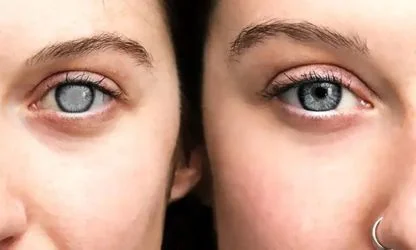Post-Surgery Care for a Speedy Cataract Recovery
Cataract surgery is a common and effective procedure to restore clear vision by replacing the eye's cloudy natural lens with an artificial intraocular lens (IOL). While the surgery itself is typically quick and safe, proper post-operative care is crucial to ensure a smooth recovery and optimal visual outcomes
Wednesday, 02 April, 2025

Causes and Risk Factors
After cataract surgery, it's normal to experience mild discomfort, grittiness, or blurred vision. To promote healing:
-
Protect Your Eye: Use the prescribed eye shield, especially during sleep, to prevent accidental rubbing or pressure on the eye.
-
Administer Prescribed Eye Drops: These medications help prevent infection and reduce inflammation. Follow the dosage and schedule provided by your ophthalmologist.
-
Avoid Strenuous Activities: Refrain from heavy lifting, bending over, or engaging in vigorous exercises that could increase intraocular pressure.
Hygiene and Environmental Precautions
Maintaining a clean environment minimizes the risk of infection:
-
Keep Water Out of the Eye: Avoid swimming and be cautious during showers to prevent water from entering the eye for at least the first week post-surgery.
-
Avoid Dusty or Polluted Areas: Exposure to dust, wind, or pollen can irritate the healing eye.
-
Refrain from Eye Makeup: To reduce the risk of contamination, avoid using eye makeup until your doctor gives the all-clear.
Visual Recovery and Activities
Most patients notice an improvement in vision within 24-48 hours, but full recovery can take several weeks:
-
Driving: Consult your doctor before resuming driving. Typically, patients are advised to avoid driving for at least 24 hours post-surgery.
-
Reading and Screen Time: Limit activities that strain the eyes, such as reading or using digital devices, during the initial recovery period.
Follow-Up Appointments
Regular check-ups are essential to monitor healing and address any complications:
-
First Post-Operative Visit: Usually scheduled within 1-2 days after surgery to assess the eye's condition.
-
Subsequent Visits: Additional appointments may be scheduled over the following weeks to ensure proper recovery and to determine if prescription lenses are needed.
Potential Complications
While cataract surgery has a high success rate, being aware of possible complications ensures prompt treatment:
-
Posterior Capsule Opacification (PCO): Sometimes referred to as a "secondary cataract," PCO can cause vision to become cloudy again. Treatment involves a quick, painless laser procedure called YAG laser capsulotomy to restore clear vision.
-
Infections or Inflammation: Symptoms like increased redness, pain, or vision loss should be reported to your doctor immediately.
Lifestyle Adjustments
To support recovery and maintain eye health:
-
Wear Sunglasses: Protect your eyes from bright light and UV rays, as they may be more sensitive post-surgery.
-
Healthy Diet: Consume a balanced diet rich in antioxidants to support overall eye health.
-
Stay Hydrated: Proper hydration aids in healing and overall well-being.
When to Seek Immediate Medical Attention
Contact your ophthalmologist if you experience:
-
Severe or Worsening Pain: This could indicate a complication that needs prompt evaluation.
-
Sudden Vision Changes: Such as flashes of light, floaters, or significant vision loss.
-
Increased Redness or Discharge: Signs of possible infection that require immediate care.
Conclusion
Adhering to post-surgery care guidelines is vital for a speedy and successful cataract recovery. Always follow your ophthalmologist's instructions and attend all scheduled follow-up appointments to ensure the best possible outcome. By taking these steps, you can enjoy the benefits of restored vision and a swift return to your daily activities.